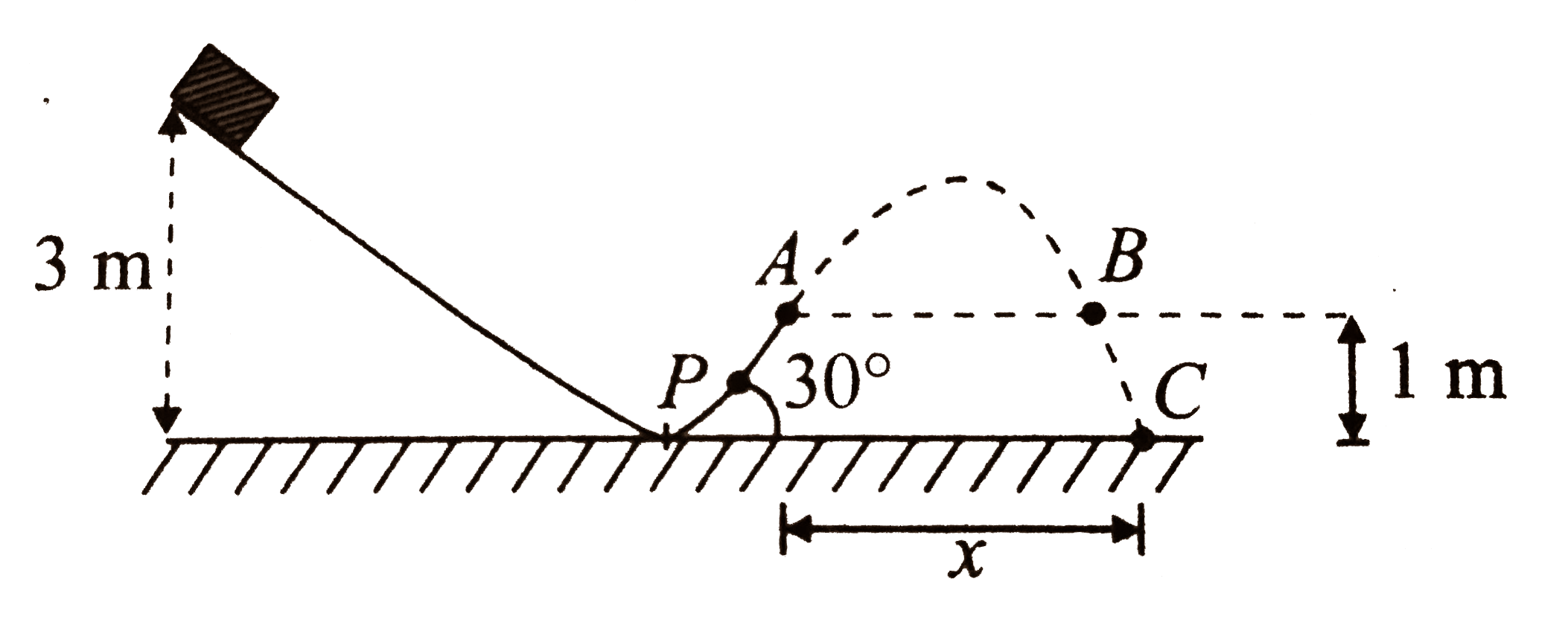A wedge with a rough circular track AB, is fixed on the plane xx'. The radius of the track is R and the coefficient of friction of the track varies as μ=μ0x. Find the work done on mass m in moving from A to B. Here C is the centre of the circular track AB and x is the distance along +vexaxis from origin O.

F=μmgcosθ+mgsinθ
μ=μ0x=μ0Rsinθ
Work done in moving block a small distance ds along track
∫dW=∫Fds
W=∫x/20FRdθ=μ0mgR∫x/20sinθcosθdθ+∫x/20mgRsinθdθ
W=mgR[μ02+1]

Topper's Solved these Questions
Similar Questions
A block of mass m moving with a velocity v0 on a rough horizontal surface from x=0 coefficient of friction is given by μ=μ0=ax. Find the kinetic energy of the block as function of x before it comes to rest.
View SolutionA cyclist moves in a circular track of radius 100 m . If the coefficient of friction is 0.2, then the maximum velocity with which the cyclist can take the turn with leaning inwards is
View Solution
Knowledge Check
Find the maximum velocity for skidding for a car moved on a circular track of radius 100 m . The coefficient of friction between the road and tyre is 0.2
A0.14m/sB140m/sC1.4km/sD14m/sA car of mass 1000 kg moves on a circular track of radius 20 m . If the coefficient of friction is 0.64, then the maximum velocity with which the car can move is
A22.4 m/sB5.6 m/sC11.2 m/sD6.5 m/sA car of mass 800 kg moves on a circular track of radius 40 m . If the coefficient of friction is 0.5, then maximum velocity with which the car can move is
A7m/sB14m/sC8m/sD12m/s
A car of mass 1000 kg moves on a circular track of radius 20 . If the coefficient of friction is 0.64, then the maximum velocity with which the car can move is
View SolutionA 1 kg mass is projected down a rough circular track (radius=2.0 m) placed in vertical plane as shown. The speed of the mass at point A is 3 m/s and at point B, it is 6.0 m/s. How much work is done on the mass between A and B by the force of friction?

View SolutionA 0.098−kg block slides down a frictionless track as shown in (Fig. 5.208).
 .
.
The horizontal distance x travelled by the block in moving from A to C is.
View SolutionA block of mass m is placed on a vertical fixed circular track and then it is given velocity v along the track at position A on track. The coefficient of friction between the block and the track varies with the angle θ . If the block moves on track with constant speed then the coefficient of friction is

View SolutionA cyclist moves in a circular track of radius 100 m. If the coefficient of friction is 0.2 , then the maximum velocity with which the cyclist can take the turn with leaning inward is
View Solution

